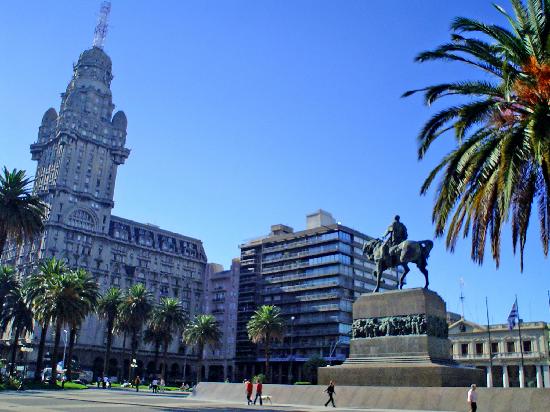
Mario Benedetti, one of the many prolific writers who have given land Uruguayan referred to his country as «the small country». Certainly small in comparison with the size of neighboring Brazil and Argentina, Uruguay, however, is five times larger than Holland, but five times less populated.
Only three million people live in Uruguay, of which just over one third live in Montevideo, the capital of the southernmost continent. The city has an area of about 522 square kilometers, of which approximately 60% are rural and the remaining 40% urban area. The vast green spaces are a feature of the Uruguayan capital, perhaps one of the least polluted in the Latin American context.
Montevideo, Uruguay has always rivaled with their neighbors somewhat Argentines. Both are vying places who is more “Rioplatense”, but the fact is that, geographically, Montevideo is the great door of the Rio de la Plata and one of the best and largest American ports.
There are also disputes over the birth of the tango is nobody agrees, of course, yes, The cumparsita the archiconocido it became famous tango by Carlos Gardel was Uruguayan hundred percent because it was written by Gerardo Matos Rodríguez, journalist and composer.
Montevideo is a city that still retains a human scale, although growing in recent times without stopping, especially along La Rambla, a large avenue that runs along the Rio de la Plata. Despite this continued growth, the abundance of parks and quite moderate traffic make the Uruguayan capital city a pleasant and quiet, which aspects are being added to a discrete cosmopolitanism of its people, resulted in a marked respect for the visitor and a extreme kindness in addressing the tourist.

This city cannot provide the traveler a great architectural heritage (it was founded in the mid-eighteenth century), but conservation areas and areas of interest that deserve to be traveled slowly.
Lovers of architecture of the twenties will last in Montevideo, where they will find many beautiful buildings bill. We enjoy places like the Plaza Matriz, surrounded by some of the oldest buildings in the city, as the Church (1790-1804) and the Cabildo de Montevideo (1804).
Also in the Old City we will find the only remaining of the ancient wall that protected Montevideo in the eighteenth century. In Independence Square was erected in ashlar stone with an elegant baroque façade, the Door of the City. This architectural element contrasts vividly with the modern buildings around it.
At the end of the Old City, close to the docks in the bay of Montevideo, find the Mercado del Puerto, a popular and lively place where we can take the pulse of the Montevideo and a national passion, football, the power that once outside Uruguay. The main artery of Montevideo, is the Avenue July 18, in which we find a good representation of all the architectural styles of the twentieth century. There stands the obelisk and is the National Library and the University.

Perhaps the best location in Montevideo and a «must visit» when at sea. Fortaleza del Cerro is a building for military purposes since 1799 which shows the great Montevideana Bay, the skyline of the capital and the Atlantic Ocean.
2 Responses to “Montevideo, from the Rio de la Plata”
Leave a Reply
You must be logged in to post a comment.
mayo 21st, 2009 at 10:53 am
[…] Only three million people live in Uruguay, of which just over one third live in Montevideo, the capital of the southernmost continent. The city has an area of about 522 square kilometers, of which approximately 60% are rural and the remaining 40% urban area. The vast green spaces are a feature of the Uruguayan capital, perhaps one of the least polluted in the Latin American context. More here villadeayora.com/blog […]
septiembre 11th, 2009 at 2:56 am
Peace I’m from Egypt and admire your country and I wish her and I live in Morocco and Spain, a businessman working in the trade of furniture